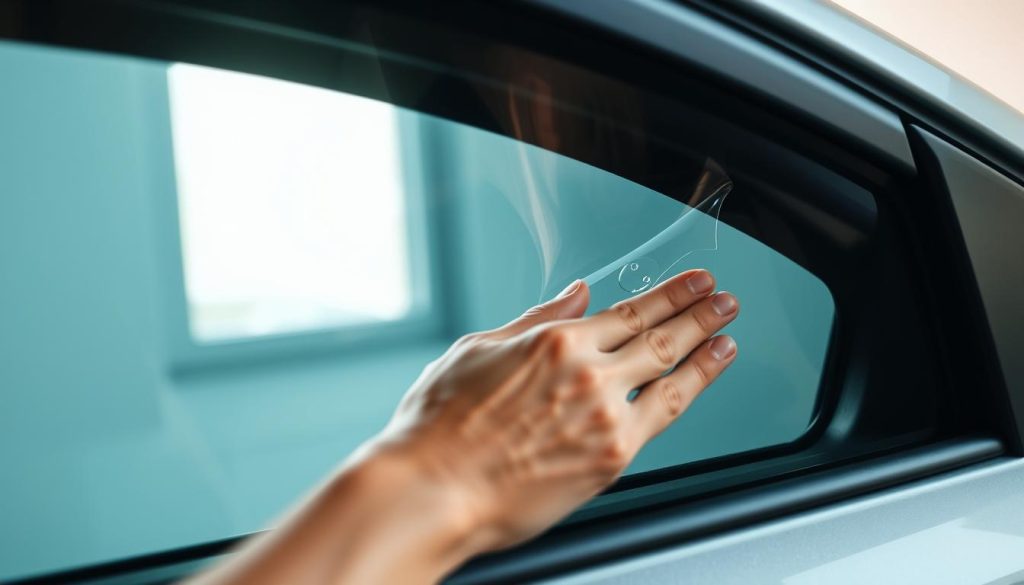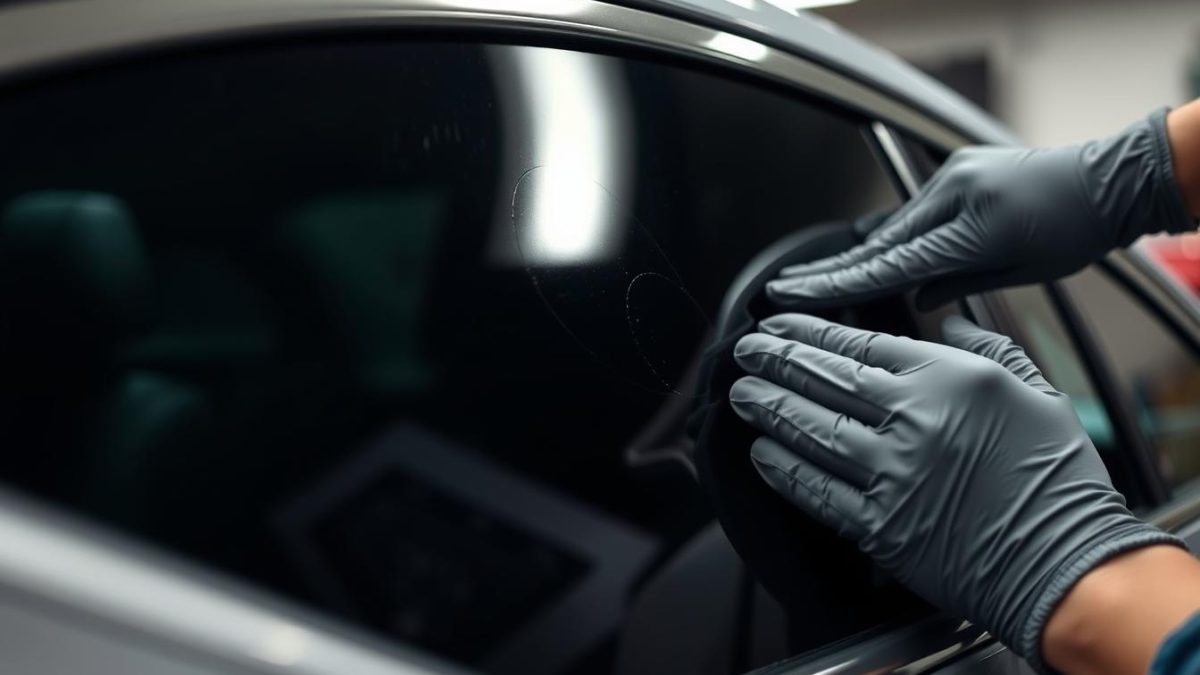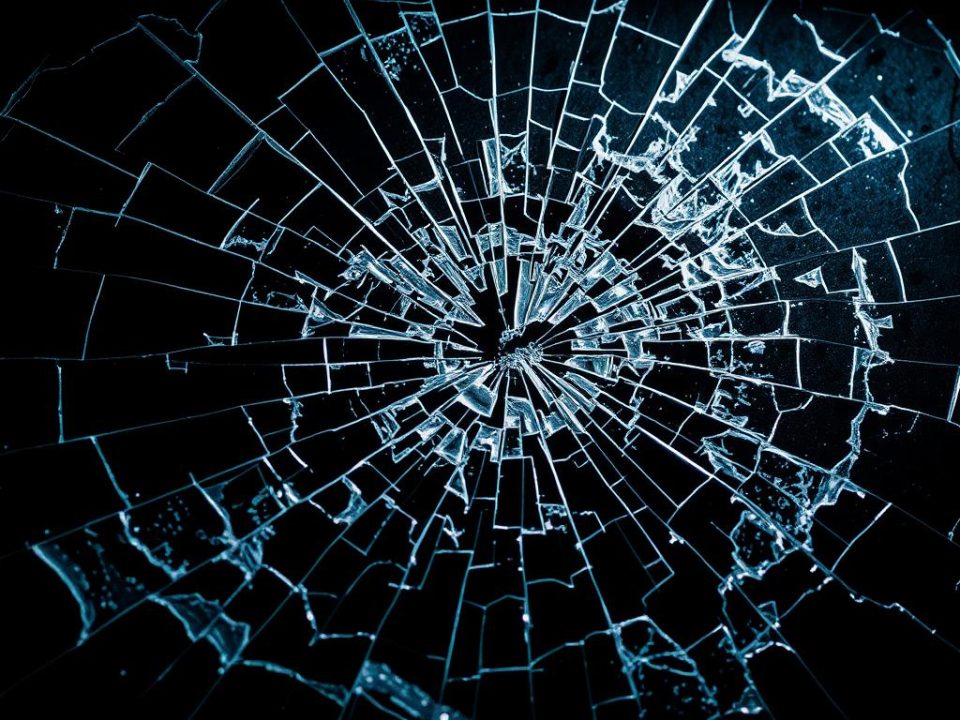
Same-Day Windshield Repair Near You in San Antonio

How to Find Discount Auto Glass Without Sacrificing Quality
You’ve just had your vehicle’s windows tinted, but now you’re noticing unsightly bubbles forming under the film. It’s frustrating, isn’t it? These bubbles can be annoying and may even affect your visibility while driving.
Don’t worry, you’re not alone. Many car owners face this issue after getting their windows tinted. The good news is that there are ways to address this problem. Understanding the causes of these bubbles and knowing how to fix them is key for keeping your vehicle looking good and safe.
Proper window tint maintenance can help prevent these issues. In this article, we’ll explore the reasons behind these bubbles and provide you with practical solutions. This way, your vehicle’s windows will look great and stay in good condition.
Key Takeaways
- Understand the causes of bubbles after window tinting
- Learn how to prevent bubbles from forming
- Discover effective methods for tint bubble repair
- Find out how to maintain your window tint for longevity
- Get tips on ensuring your vehicle’s windows remain in good condition
The Current State of Window Tinting
The world of window tinting is changing fast. New technologies are coming out to solve old problems. This means car owners have more ways than ever to make their drives better.
Recent Developments in Tinting Technology
New advancements in tinting tech have made tints stronger and more efficient. Miracle Auto Glass is leading the way with top-notch tints. These tints can handle different weather conditions well.
Common Issues Reported by Vehicle Owners
Even with these new tints, car owners face problems. They often deal with tint curing and heat exposure issues. These issues can cause bubbles and make it harder to see.
Statistics on Tint Problems
- More than 30% of car owners see tint bubbles in the first year.
- High temperatures over 100°F can make tints degrade faster.
- About 25% of tint complaints are due to bad installation.
Most Frequent Customer Complaints
Customers often talk about bubbles under the tint. This can happen for many reasons, like bad installation or extreme heat.
To avoid these problems, picking a trusted service like Miracle Auto Glass is key. They use the best materials and install tints correctly.
Understanding Window Tint Bubbles
Tint bubbles are a common issue after window tinting. They affect your vehicle’s windows’ look and function. These bubbles can be a problem for those who got tinting for UV protection and heat reduction.
What Exactly Are Tint Bubbles?
Tint bubbles are air pockets between the tint film and your vehicle’s glass. They happen when the adhesive layer doesn’t stick well, leaving air pockets.
The Impact of Bubbles on Visibility and Aesthetics
Tint bubbles can make your vehicle look old or not well-kept. Big bubbles can also block your view, which is a safety risk.
Safety Concerns
While tint bubbles don’t cause accidents directly, they can be distracting. They can block your view, which is dangerous. It’s important to have a bubble-free tint for clear visibility.
Appearance Issues
Tint bubbles also hurt your vehicle’s look. A bubble-free tint keeps your car looking sleek.
Fixing tint bubbles quickly is key for your vehicle’s look and function. Regular window tint maintenance can stop bubbles and make your tint last longer.
The Science Behind Window Tinting
Window tinting is more than just a style choice. It’s about making your car more comfortable and energy-efficient. Today’s window tint uses advanced materials and tech. It looks great and offers real benefits.
How Modern Window Tinting Works
Modern tinting adds a thin film to your car’s windows. This film blocks certain light waves. It keeps your car cool in summer and warm in winter. It also cuts down glare and protects against UV damage.
Different Types of Window Tint Films Available Today
There are many window tint films out there. Each has its own special features and benefits.
Ceramic Tints
Ceramic tints are top-notch at blocking heat and lasting long. They’re also non-metal, safe for cars with fancy electronics.
Carbon Tints
Carbon tints give a cool matte look. They block infrared radiation, keeping your car cool. Plus, they’re tough and last a long time.
Metalized Tints
Metalized tints reflect heat and light with metallic particles. They’re good at keeping heat out but might mess with electronics.
| Tint Type | Heat Rejection | UV Protection | Glare Reduction |
|---|---|---|---|
| Ceramic | Excellent | High | Good |
| Carbon | Good | High | Excellent |
| Metalized | Good | Moderate | Good |
Main Causes of Bubbles in Window Tint
Bubbles in window tint are common and usually caused by how it’s installed and the environment. Knowing these causes helps in preventing and fixing the problem.
Poor Installation Techniques
Poor installation is a big reason for bubbles. This includes two main areas:
Inadequate Surface Preparation
Not cleaning the window well before tinting can cause bubbles. Dirt or moisture can get trapped, leading to issues.
Improper Application Methods
How you apply the tint matters a lot. Wrong sizing, misalignment, or applying in bad weather can lead to bubbles.
Environmental Factors
Environmental conditions also play a big part. Extreme temperatures, too much sunlight, and humidity can all cause bubbles.
Low-Quality Tint Materials
The quality of the tint material is important too. Cheap tints may not stick well, causing bubbles over time.
Here’s a comparison of these factors:
| Cause | Description | Prevention Method |
|---|---|---|
| Poor Installation | Bubbles due to improper application or surface prep | Ensure professional installation with proper surface cleaning |
| Environmental Factors | Bubbles caused by extreme temperatures or humidity | Park in shaded areas, use sunshades |
| Low-Quality Tint | Bubbles resulting from poor adhesion of low-quality tint | Use high-quality tint materials |

Understanding the causes of bubbles in window tint helps prevent them. This ensures your tint lasts longer and looks better.
How to Identify Problematic Tint Bubbles
It’s important to know the difference between normal and bad tint bubbles. When checking your car’s tint, you need to tell normal curing bubbles from the ones that mean trouble.
Normal Curing Bubbles vs. Permanent Bubbles
When tint is curing, bubbles might form between the film and the glass. These curing bubbles usually go away as the tint sticks to the window. But, permanent bubbles stay and might mean the tint was put on wrong or is low quality.
| Characteristics | Normal Curing Bubbles | Permanent Bubbles |
|---|---|---|
| Duration | Temporary, disappears during curing | Persistent, remains after curing |
| Size and Distribution | Typically small, evenly distributed | Variable size, often irregularly distributed |
When to Be Concerned About Bubbling
Knowing when to worry about bubbles means looking at their size and distribution patterns. Also, pay attention to when they show up.
Size and Distribution Patterns
Big or unevenly spread bubbles are usually a bad sign. They can mean the tint isn’t sticking right to the glass.
Timing of Bubble Appearance
Bubbles that pop up long after the tint first dries, or after being exposed to heat, are a red flag. Heat exposure issues can make sticking problems worse, causing bubbles.
The Tint Curing Process Explained
Many car owners don’t know about window tint curing. But it’s key for the tint’s long life. After tinting your windows, the curing starts. It’s important for the tint to last and work well.
Standard Curing Timelines for Different Tint Types
Each tint type cures at its own pace. Most tints need a few days to a couple of weeks to cure fully. For example, ceramic tints take longer than basic dyed ones.
| Tint Type | Curing Time |
|---|---|
| Dyed Tint | 3-5 days |
| Metalized Tint | 5-7 days |
| Ceramic Tint | 7-14 days |
Factors Affecting Curing Time
Several things can change how long it takes for tints to cure. Knowing these can help you plan and take care of your tint.
Weather and Climate Considerations
Weather conditions greatly affect curing. Hot or cold weather can change the time needed. It’s best to wait patiently for the tint to cure naturally.
Humidity Effects
Humidity levels also play a part. High humidity slows curing, while low humidity speeds it up. Keeping the environment moderate helps achieve the best curing time.
DIY Tint Bubble Repair Methods
Fixing tint bubbles yourself can be easy and cost-effective. It’s a great way to keep your window tint looking good.
Essential Tools and Materials Needed
You’ll need a few things to start. A heat gun or hair dryer, a credit card, and maybe a tint repair kit for tough bubbles. Having the right tools is key for a good DIY fix.
Step-by-Step Bubble Removal Process
To remove bubbles, start by heating the area. Then, use a credit card to push the bubble out from the center.
Small Bubble Fixes
Fixing small bubbles is easy. Just heat the area and smooth it out. This works well for small, new bubbles.
Larger Bubble Remediation
Big bubbles need more work. You might need to reapply the tint or use a repair kit. Be patient with big bubbles.
When DIY Methods Are Appropriate
DIY fixes work well for small, new bubbles. But, big or old bubbles might need a pro. Also, be careful if heat caused the bubble to avoid making it worse.
Professional Tint Bubble Repair Services
Tint bubbles can ruin the look of your car. Professional tint bubble repair services can fix this. If DIY methods don’t work, or you’re not sure how to fix it, getting help from a pro is smart.
Latest Techniques Used by Professionals
Experts use new methods and tools to fix bubbles without harming your tint or windows. Miracle Auto Glass uses the latest techniques for a bubble-free finish. They know how to work with different tint materials.

Cost Considerations for Professional Fixes
The price for fixing tint bubbles depends on a few things. This includes the size and number of bubbles, the tint type, and your car’s make and model.
Average Price Ranges
Expect to pay $50 to $200 for professional fixes. The price varies with the job’s complexity.
Value Analysis
Professional repairs cost money, but they’re worth it. They ensure your tint lasts longer and your car looks great.
Think about the benefits when choosing professional tint bubble repair. A good fix improves your car’s look and keeps your tint working well. It also offers UV protection and reduces heat.
Preventing Bubbles in New Window Tint
Getting bubble-free window tint is possible with the right materials, proper installation, and regular care. To keep your new tint looking great, focus on these important areas.
Selecting Quality Tint Materials
Choosing top-notch tint materials is the first step to avoid bubbles. Look for well-known brands that make durable, bubble-resistant films. While quality tint may cost more at first, it’s worth it for a bubble-free finish.
Best Practices for Installation
Proper installation is key to avoiding bubbles. Make sure the installer cleans the window well before applying and uses the correct tools to smooth the film.
Maintenance Tips for New Tints
Regular care is essential to keep your tint bubble-free. Here are some tips:
-
Cleaning Recommendations
Clean the tinted windows with a mild soap and a soft cloth. Stay away from harsh chemicals or rough materials that can harm the film.
-
Protection Strategies
Park in shaded spots or use a sunshade to lessen heat, which can cause bubbles. Check your tint often for any damage or bubbling.
By following these tips, you can enjoy a bubble-free window tint. It will make your vehicle look better and work better too.
Heat Exposure Issues and Window Tint Maintenance
It’s important to know how heat affects your window tint. High temperatures can make the tint degrade, bubble, or even peel off. So, it’s key to protect your tint from heat.
How Extreme Temperatures Affect Window Tint
High heat can soften the adhesive, causing bubbles or peeling. Low temperatures can make the tint brittle, leading to cracks. Proper care and maintenance are key to mitigating these effects.
Seasonal Considerations for Tint Care
Caring for your window tint changes with the seasons. Here are some tips:
Summer Precautions
In summer, avoid parking in direct sunlight for long. Use a sunshade or park in a shaded area to reduce heat.
Winter Challenges
In winter, be careful when removing snow or ice. Use a soft, non-abrasive scraper and avoid hot water, which can cause the tint to contract rapidly.
| Season | Precautions | Challenges |
|---|---|---|
| Summer | Use sunshades, park in shade | Heat degradation, bubbling |
| Winter | Gentle snow removal, avoid hot water | Brittleness, cracking |
By understanding and addressing heat exposure issues, you can extend your window tint’s life and keep it working well.
When to Seek Professional Tint Bubble Repair
DIY fixes work for small tint bubbles. But, for big problems or hard-to-reach bubbles, you need a pro.
Signs That DIY Won’t Suffice
Trying DIY and bubbles stay? That means you need a pro for tint bubble repair. Also, big or many bubbles are too much for DIY.
Benefits of Expert Intervention
Experts in tint bubble repair save you money and ensure quality. They have the right tools and know-how for a lasting fix.
Long-Term Cost Savings
Professional services might cost more at first. But, they prevent future repairs, saving you money.
Quality Assurance
Knowing when to call a pro for window tint maintenance keeps your tint in top shape.
Conclusion: Maintaining Bubble-Free Window Tints
Keeping your window tints bubble-free is important. Knowing how tints cure and avoiding heat can help. Regular checks and maintenance can spot problems early, making fixes easier.
To avoid bubbles, follow the right installation and care steps. Choose high-quality tints and watch out for environmental factors. This can greatly lower bubble risks.
If bubbles do show up, knowing when to get help is key. Experts can fix your tints, making them look new again.
For any glass damage, Miracle Auto Glass is a great choice. They offer professional service, ensuring your vehicle stays damage-free.




